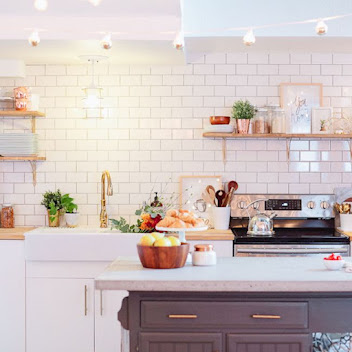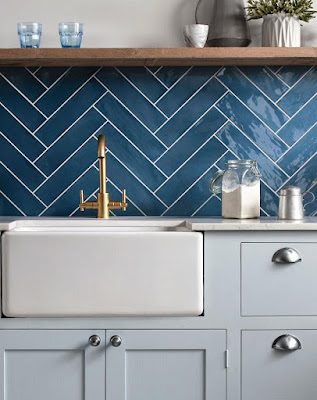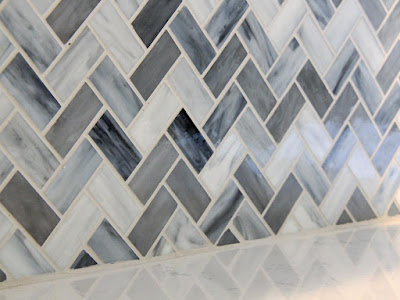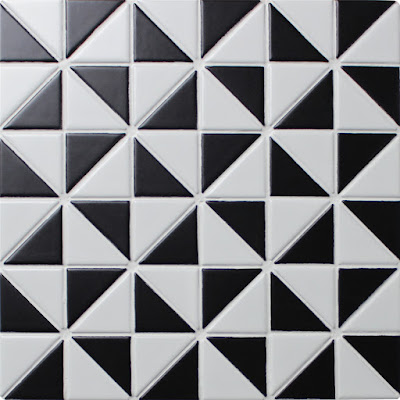Flooring for home is a big question to everyone because it is not easy to select the material and color. But have you ever thought about the pattern you can try for your flooring and back-splash? Well, many people only know the simple tiling pattern which is limited to a square shape.
Sometimes you want tile to be the statement in the room, and sometimes you want it to work in harmony with other dramatic accents in a room. Tile is the best wall and flooring choice for every interior or exterior, since it’s waterproof, easy to maintain, and won’t mold, scratch, or stain
Tile comes in countless shapes, sizes, colors, and textures. In order to determine the best tile pattern for your project—whether it's for a kitchen backsplash, a living room floor, or a bathroom vanity—it's best to know what your options are. We’ll help you with the types of patterns of tiles you even don’t hear about but won’t regret after applying them.
1. Grid Pattern
As the simplest form, this tile pattern is basically laid on top of each other meeting at the corners. This pattern is probably the most common and easiest way to lay your tiles. You may choose to use the grid pattern especially if you’ve got tiles which have their own inherent pattern and you don’t want to draw too much attention.
2. Brick Pattern or Subway Tile Pattern
Another highly popular pattern, and actually the classic layout for subway tile is the brick pattern. Subway tile is the most traditional and popular tile pattern, and it typically comes in a rectangular shape of all degrees and colors. This is one of the top patterns to install in powder rooms and shower walls as well as kitchen backsplashes.
3. Hexagon Tile Pattern
The shape you once knew from geometry class has made a major comeback as hexagon tile. Geometric tiles are one way to enliven up the interior to create more impressive and interesting designs. This year, geometric patterns will still be one of the most sought-after design trends and will keep popping up in our homes. Geometric patterns come in a wide range of materials, finishes, and hues, offering you an array of delightful pieces to pick from. You can choose vibrant colors to create some excitement or opt for colors that blend into the color palette of the room
4. Herringbone
Herringbone is a tile pattern that has been used to jazz up standard marble tiling floors. Herringbone Tile is usually laid at a 45-degree angle to the floor or wall that it adjoins, laying it horizontally can create a unique, unusual design that makes the pattern really popular! Any size rectangular tile works for the herringbone pattern but the bigger your tile is, the more obvious your tile pattern gets. Often found in larger formal living rooms, dining rooms, and even entryways, the herringbone pattern is the ideal layout especially for wood-look porcelain tiles due to their size and overall look.
Herringbone tiles are also one of the most popular backsplash options. For easier wall applications, many mosaics come with herringbone shapes built onto the mesh today. To create beautiful focal points, you can opt for a herringbone pattern over the cooktop or inside a shower niche.
5. Chevron Pattern
Very similar to the herringbone pattern, chevrons are showing a major moment in flooring right now. The chevron layout is basically rows of tiles creating ‘V’ shapes, meeting at mitered angles. The chevron tile pattern is made up of rows of interlocking designs, joined end to end in order to create a seamless zigzag pattern that can run either parallel or perpendicular to the walls or floor. A great example to elongate your decor is adding chevron tiles all the way up to the ceiling. Not to mention that marble also adds a sense of luxury to this bathroom decor.
6. Windmill Pattern
Resembling the blades of a windmill, this is a stylish pattern choice especially if you have special tiles to highlight your design. If you are planning for a vintage style update, this pattern has the classic feel you need. The windmill pattern is made using brick tiles that frame a central square tile. This pattern works well if you have wonderful tiles to show as a centerpiece within the pattern. Just like other tile patterns, the windmill pattern is also available in the mosaic form for easy installation. Keep in mind that small mosaics can result in highly textured patterns, so better to use with a plain decor unless you want a very busy look.
7. Basket Weave Pattern
The basket weave pattern has been a popular way of decorating the floor. The basketweave pattern has two tiles laid next to each other to form a square. The following pair of tiles are laid at 90 degrees to the first and so on. Enhancing spaces with its geometric symmetry and traditional look, basket weave tile can create that classic chic feel on the floors as well as on backsplash and accent walls.
8. Scallop Tile Pattern
This tile is slightly more unconventional than its counterparts, but can make for a fun twist on either a small canvas, like a wet bar, or a larger one, like a countertop-to-ceiling backsplash. "Depending on how you orient these fan-shaped tiles, they can look like fish scales, gingko leaves, or fans.
9. Diagonal or Diamond Pattern
When it comes to floor patterns, diagonal style will never fade. This layout will work wonders in narrow entryways and bathrooms because the diamond pattern is known as one of the easiest ways to make a narrow space appear wider and bigger because it focuses your eye on the widest part of the diamond and the wide angles of the grout lines, making it feel like you’re in a much larger space. This pattern is basically a grid pattern turned at a forty-five-degree angle to create a more dynamic look. Tiles have to be a square shape in order to create this diagonal pattern. In a room where walls are not perfectly square, this diamond layout can hide imperfections easily.
10. Pinwheel (Hopscotch)
One of the loveliest tile patterns especially if you have some special tiles to highlight, is the Pinwheel pattern—it’s a real classic. This pattern is fairly labor-intensive to lay, but gets quicker once you get into the rhythm of the pattern. Lots of mosaic tile makers are now offering this pattern already backed on a mesh, which of course makes it easier.
Conclusion
Different tile layouts and shapes provide endless design opportunities and as you can see, there are plenty of options for you to choose from. If you’re having trouble with deciding tile pattern you can try marble tiles. You can also contact us or visit our website for knowing more about this.
No matter which tile pattern you choose, try to select patterns that feel classic.









.jpg)

